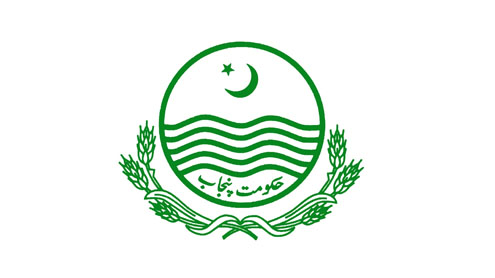
LAHORE: The Punjab government increased its budgetary allocations of major social sectors, including education, health, water supply and sanitation and infrastructure development during last four years, while funds for development of southern Punjab were enhanced more than five times as compared to 2007-08 budget.
Allocation for education was only Rs 11.807 billion in 2006-07 now it has been increased to Rs 111.278 billion, while budgetary allocations for health has been increased from Rs 11.37 billion to 71 billion; water supply and sanitation from Rs 12.66 billion to Rs 43.38 billion; infrastructure development from Rs 104.70 billion to Rs 318.49 billion and Southern Punjab from Rs 52.75 in 2006-07 to Rs 292.43 billion in 2012-13.
The allocation of education head was utilized for provision of IT labs to 4,286 higher secondary schools in the province, for establishment of Daanish schools to provide quality education to the poor and disadvantaged. Provision of missing facilities was ensured in 6,113 school and 23 colleges, while 42000 qualified teachers were recruited. As many as 2788 schools were Upgraded from primary to middle and middle to higher level besides providing training to 120,000 teachers and educational managers.
The Punjab government also established 66 new degree colleges and 13 existing colleges were upgraded from inter to degree level, besides launching sub campuses of Punjab University at Jhelum and 5 new women universities in the province. Establishment of Information Technology University (ITU) at Lahore, Rs 10 Billion for PEEF (Punjab Education Endowment Fund) and Laptop Scheme for talented students under CM’s youth initiative program were some other milestones in the education sector.
Putting focus on health sector the provincial government established Medical Colleges in Gujrat, DG Khan, Sahiwal, Sialkot and Gujranwala, besides ensuring provision of issuing facilities in 42 hospitals of the Punjab. The government also built 3 new tehsil headquarters and two rural health centres, while 4 RHCs were upgraded as THQ level and two Basic Health Units were upgraded to Rural Health Centres. Additional Institute of Cardiology and Urology was established in Rawalpindi and another 410-bed hospital was constructed in Bahawalpur.
With the aim to achieve Millennium Development Goals (MDGs) set for the sector of Water Supply & Sanitation to provide clean drinking water & sanitation facilities to all citizens of the province. The government increased allocations for this head from Rs 12.66 billion to Rs 43.38 billion.Roads infrastructures has been given special importance and during last four years about 1,800kms roads were widened from 10-12 ft to 24 ft and 700kms of new roads were constructed.
The government also completed eleven small dams in Potohar area benefiting an area of 209,45 acres. Besides lining of channels for about 515kms was carried in these four years. Improvement in Drainage and flood protection works for 255kms were completed. Some of the major initiatives projects of this sector were rehabilitation/modernization of works on Taunsa barrage and rehabilitation/modernization of works on Jinnah and Khanki barrages started.
Under Renewable Energy Development Programme (REDSIP) Construction of Marala Hydel Power Station (Rs 4bn) and 4 other hydel stations with Asian Development Bank (ADB) assistance were launched. Total 86 MW generation would be possible with these new schemes. Coal based power plant of 50 MW is also being set up at Sundar Industrial Estate.In Urban Development Sector an investment of Rs 36.780bn has been made in 9 large and intermediate cities to improve urban infrastructure.
Single largest project in Agriculture Sector (Punjab Irrigated Agriculture Productivity Improvement Project) (PIPIP) at a cost of Rs 36bn has been initiated. Green Tractor Scheme was launched for Provision of subsidized tractors to farmers.Other major initiatives of the Punjab government included Ashiana Housing Scheme for labourers and workers; Writing off loans scheme for poor widows; free medicines to deserving patients and in emergency wards of all hospitals; Introduction of public transport system in big cities; performance efficiency allowance for low grade police officials; increases in salary of judiciary and police officials; performance based incentives for teachers, youth and women development schemes worth Rs 37bn introduced by the government.
For the Development of Southern Punjab allocation increased from Rs 22bn in 2007-08 to Rs 80bn in 2012-13. Main development programme of Southern Punjab included Southern Punjab Development Programme; DFID Assisted Punjab Economic Opportunities Programme (Bahawalpur, Bahawalnagar, Lodhran and Muzzafargarh) worth Rs 7.5 billion.IFAD Assisted Southern Punjab Poverty Alleviation Project of Rs 4.1 bn in four districts i.e.
Bahawalnagar, Banawalpur, Muzaffargarh and Rajanpur; Tribal Areas Development Programme; Cholistan Development Authority Programme; Shadbad Cholistan Development Project; Cholistan Livestock Cooperative Farms Project; Provision of physical and social infrastructure in Cholistan, including water, electricity and roads and the completion of Asian Development Bank assisted Southern Punjab Basic Urban Services Project. – Dailytimes












